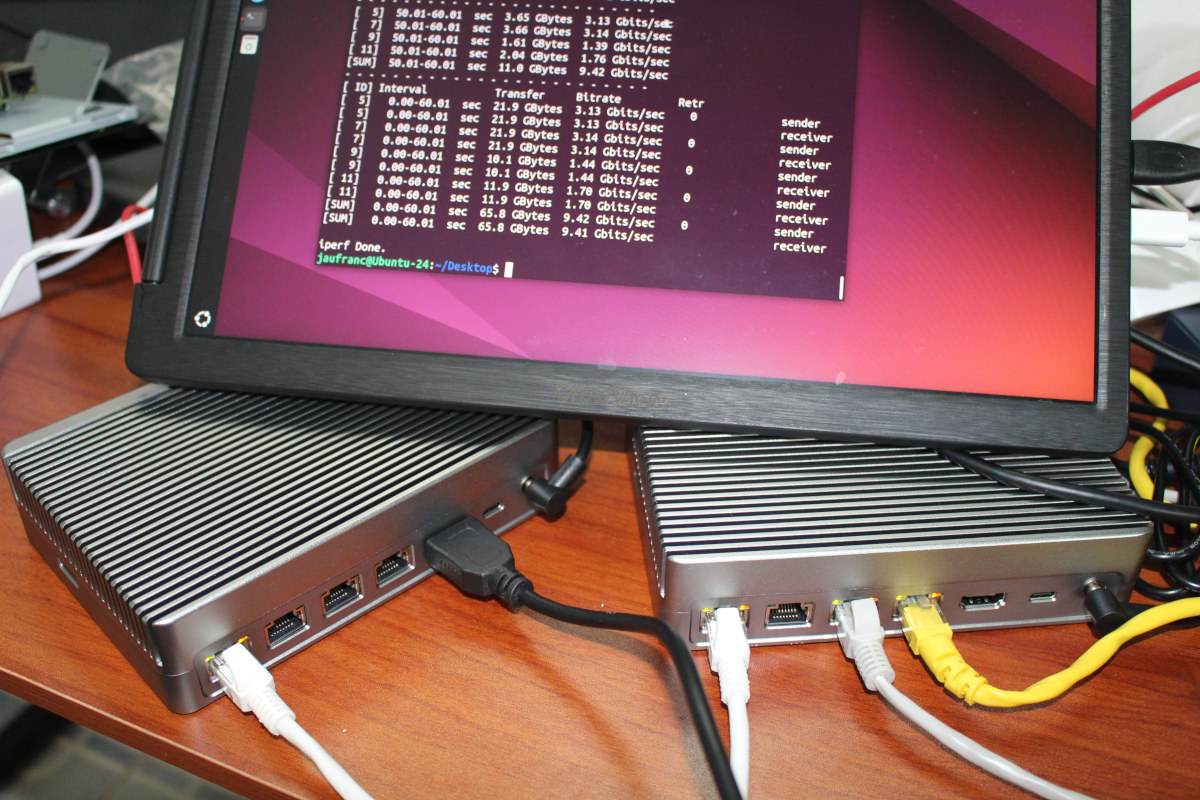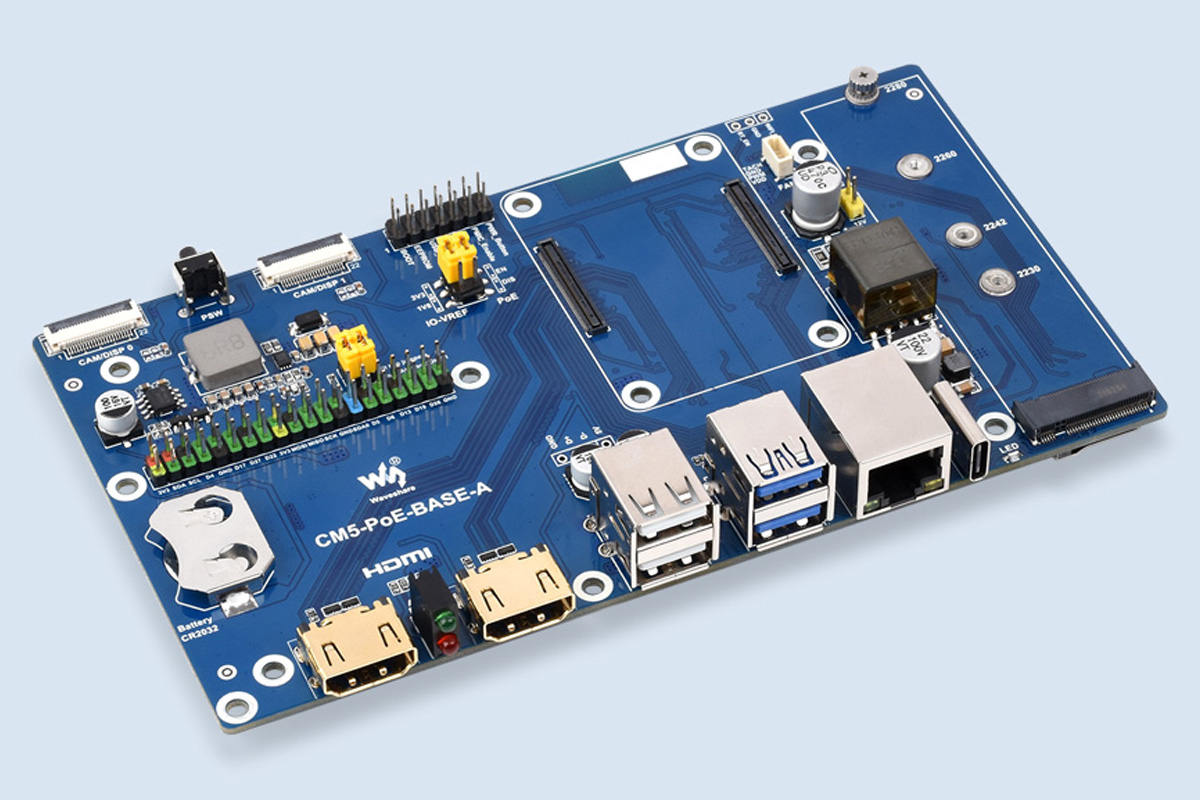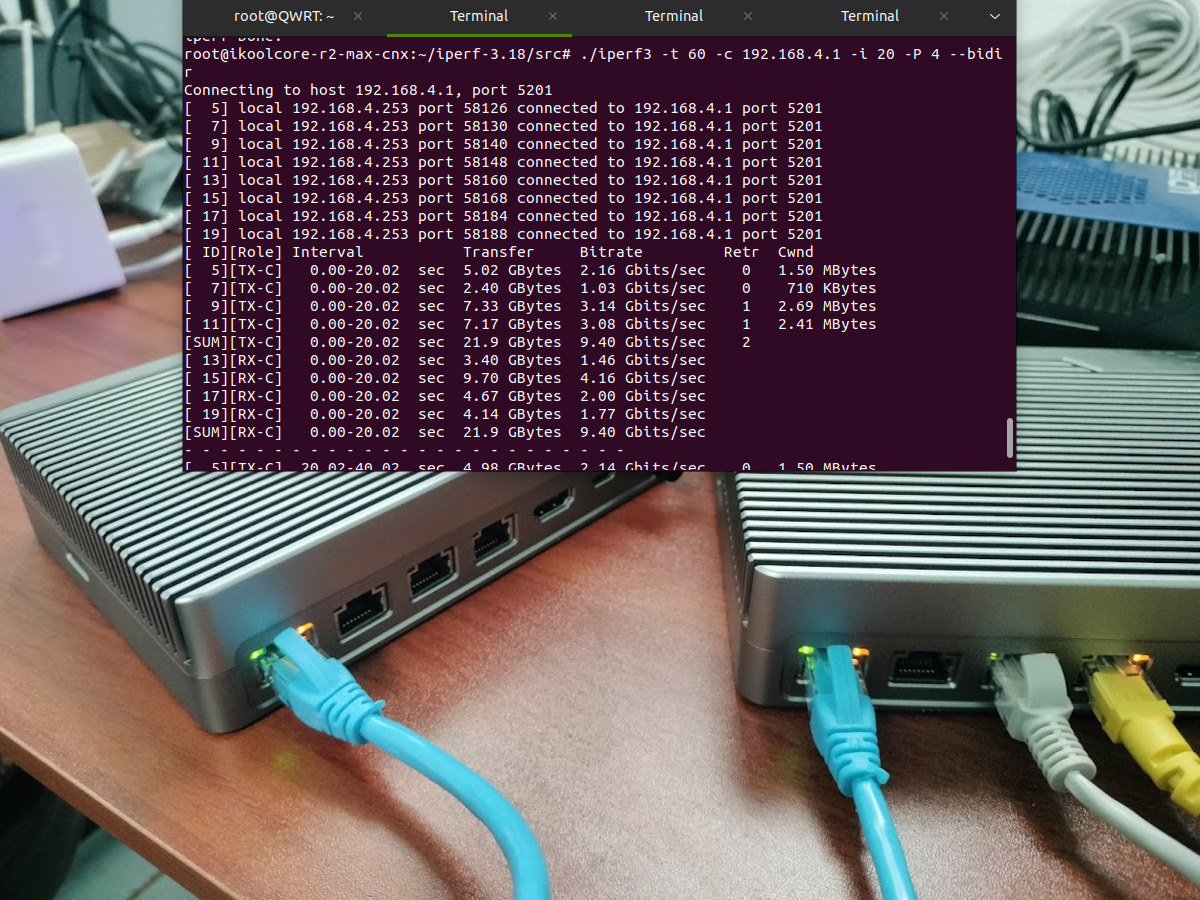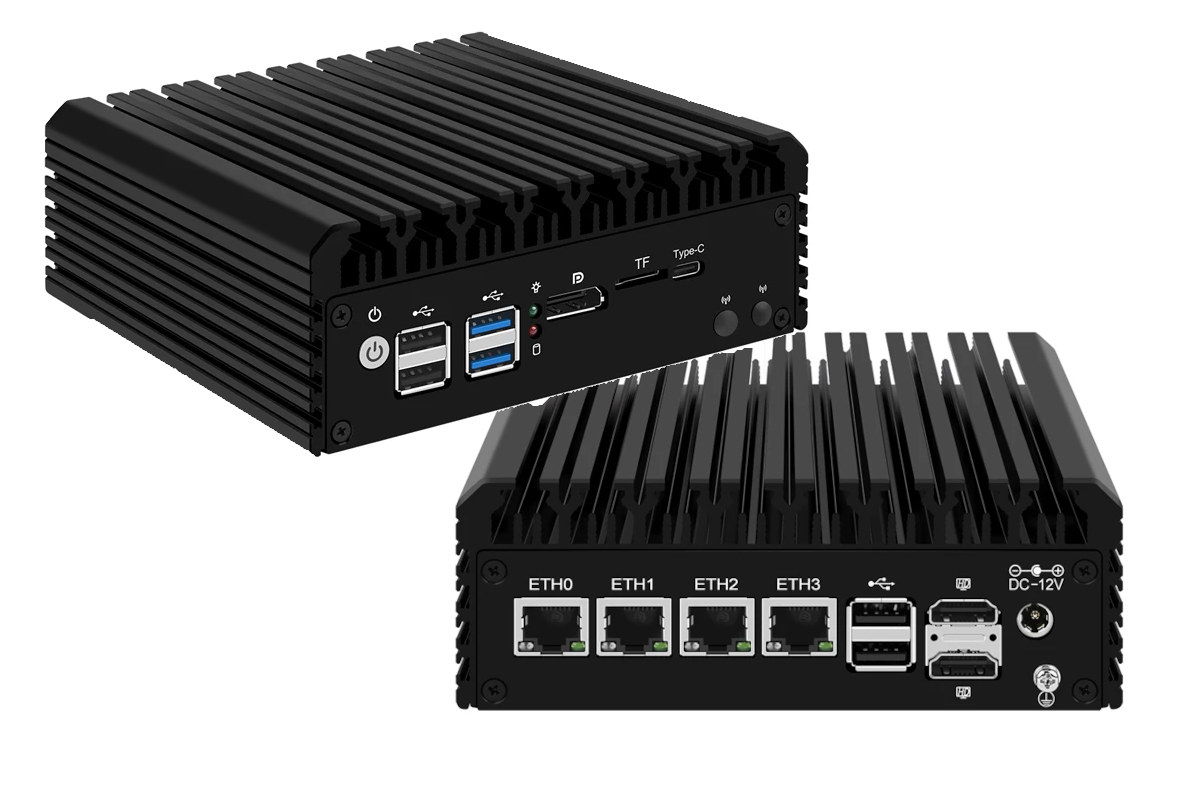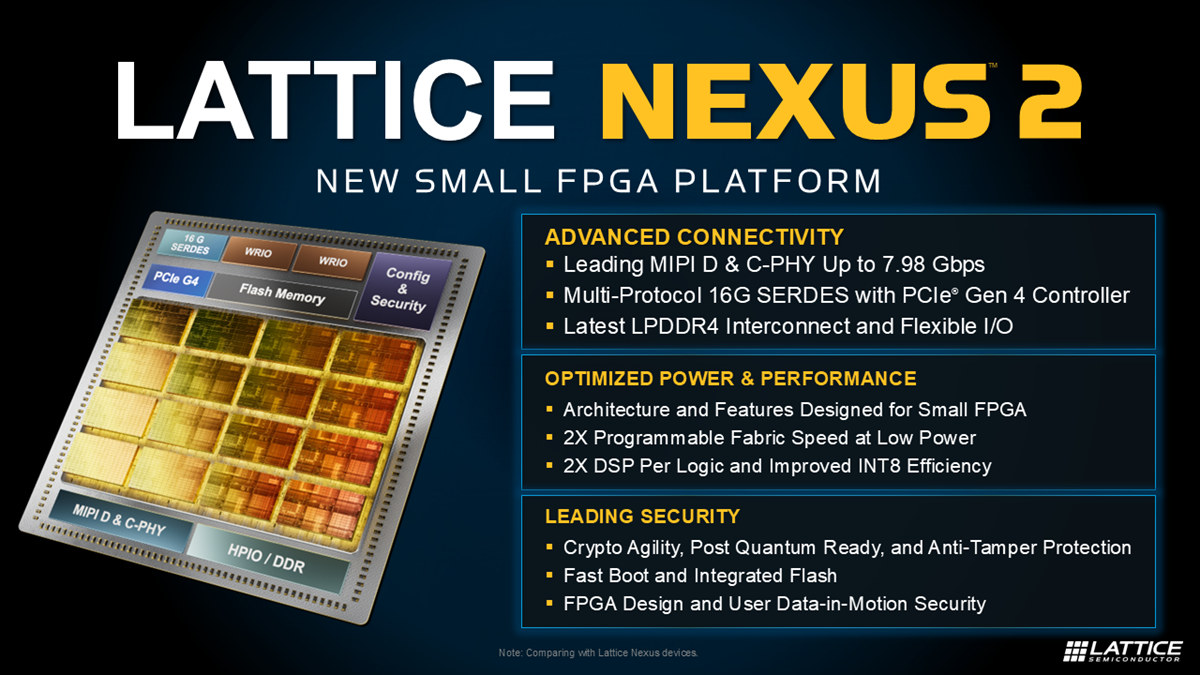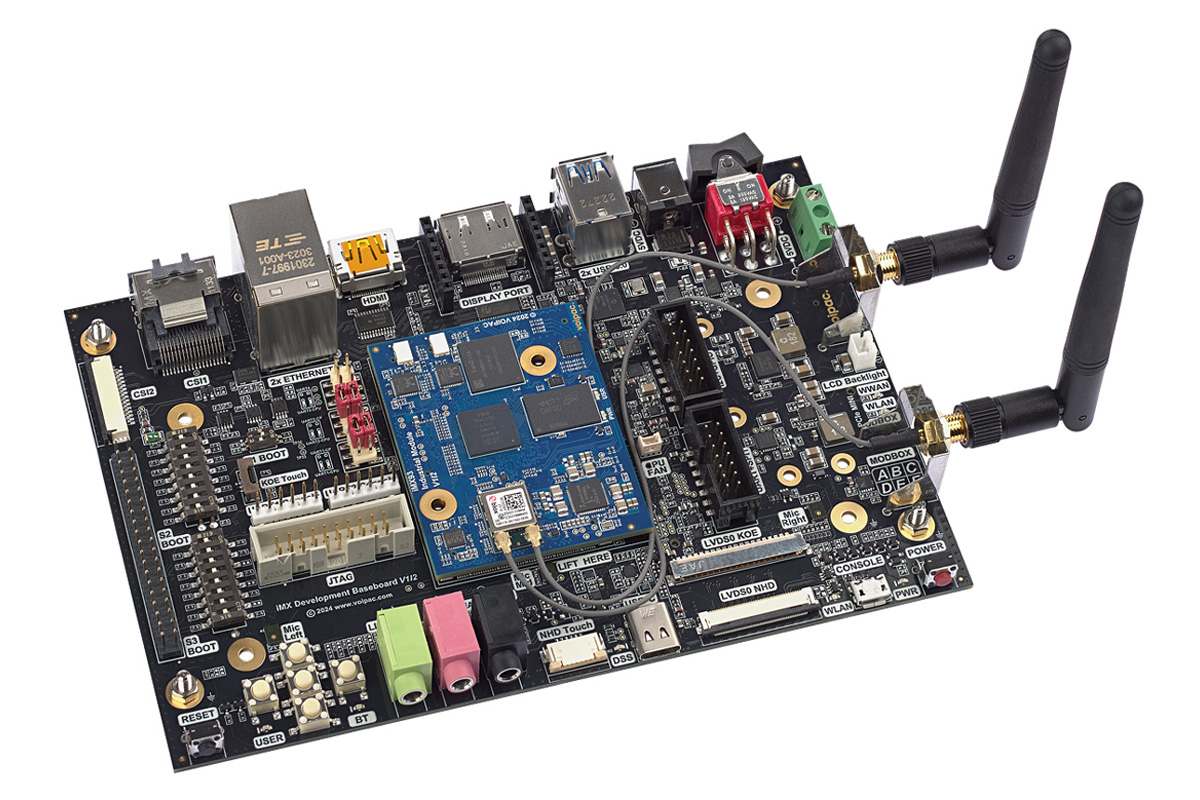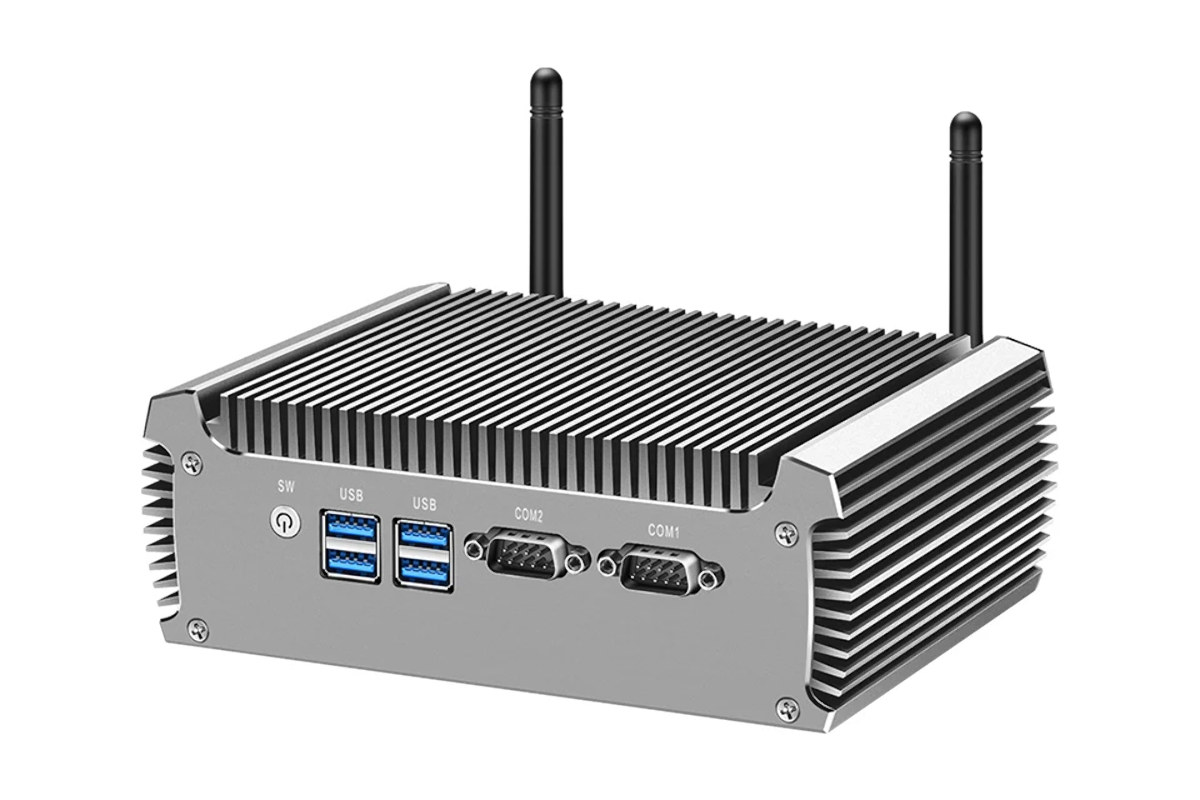I’ve already checked out iKOOLCORE R2 Max hardware in the first part of the review with an unboxing and a teardown of the Intel N100 system with two 10GbE ports and two 2.5GbE ports. I’ve now had more time to test it with an OpenWrt fork, Proxmox VE, Ubuntu 24.04, and pfSense, so I’ll report my experience in the second and final part of the review. As a reminder, since I didn’t have any 10GbE gear so far, iKOOLCORE sent me two R2 Max devices, a fanless model and an actively-cooled model. I was told the fanless one was based on Intel N100 SoC, and the actively-cooled one was powered by an Intel Core i3-N305 CPU, but I ended up with two Intel N100 devices. The fanless model will be an OpenWrt 23.05 (QWRT) server, and the actively cooled variant be the device under test/client with Proxmox VE 8.3 server […]
Raspberry Pi CM5 gets carrier boards with built-in PoE/PoE+
Waveshare has recently launched CM5-PoE-BASE-A, a compact development and evaluation board that supports all variants of the Raspberry Pi Compute Module 5 (CM5). While searching for more information about this product I came across Modulo5 IO PoE+, another development board from Pineboards also designed for the RPi CM5 module. Pineboards’ Modulo5 IO PoE+ offers a premium UK-manufactured PoE+ module capable of delivering 25W continuous power, with support for NVMe storage and compatibility with the Raspberry Pi 5 Active Cooler. On the other hand, Waveshare’s CM5 PoE Base Board features a Gigabit Ethernet port featuring 802.3af/at PoE compliance, peripheral options include dual HDMI, USB 3.2 ports, and NVMe support. Both boards feature specifications similar to the official Raspberry Pi CM5 IO board with the main difference being built-in PoE/PoE+ support, along with some cosmetic changes. While the Raspberry Pi CM5 IO board does come with a 4-pin PoE connector, it requires […]
STM32-powered MM6108-EKH05 Wi-Fi HaLow evaluation kit supports Bluetooth, Camera, and Qwicc/MikroBus modules
Morse Micro has recently launched the MM6108-EKH05 Wi-Fi HaLow Evaluation Kit designed to reduce the development and deployment time of IoT products. Built around the Morse Micro MM6108 HaLow SoC, this kit combines long-range, low-power wireless connectivity with a range of integrated sensors, making it ideal for IoT engineers and developers. Key features include Wi-Fi HaLow connectivity, an STM32U585 Cortex-M33 MCU, integrated sensors (temperature, humidity, accelerometer), 16 MB of SPI Flash memory, programmable GPIOs, power measurement tools, and WPA3 security for reliable and secure communication. The kit also includes alternative power options including USB, battery, or external power, and embeds support for a camera, MikroBus and Qwicc expansion modules, Bluetooth, and current measurement circuitry. All these features make this kit useful for applications including smart homes, industrial automation, and agricultural monitoring. MM6108-EKH05 specifications: MCU – STM32U585 Arm Cortex-M33 microcontroller @ 160 MHz with TrustZone, 2 MB Flash Storage – 16Mbit […]
How to use iperf3 in multi-thread mode for 10Gps+ Ethernet testing
With 10GbE becoming more widespread and often found in entry-level hardware, the CPU may become the bottleneck, so I’ll explain how to use iperf3 in multi-thread mode to fully saturate the 10GbE bandwidth even with a system based on a relatively low-end multi-core processor.
For this tutorial, I use two iKOOCORE R2 Max mini PCs with two 10GbE interfaces each and an Intel N100 quad-core processor running an OpenWrt fork (QWRT) and Proxmox VE (Debian) respectively. I will show how I can fully saturate the 10GbE interfaces using multithreading, but not with a typical iperf3 single-core test.
HUNSN RJ42 and RJ43 Intel N150 fanless network appliances and mini PCs come with four 2.5GbE ports, four video outputs
We’ve previously seen the new Intel N150 “Twin Lake” processor in mini PCs such as Beelink EQ14 and ASUS NUC 14 Essential among others, but the new quad-core CPU is now also found in HUNSN RJ42 and RJ43 fanless network appliances with four 2.5GbE RJ45 ports. They also double as mini PCs with multiple video outputs and USB ports. The mini PCs ship with up to 32GB RAM and 512GB of storage, support four independent displays through HDMI, DisplayPort, and USB-C interfaces, and offer five USB Type-A ports for expansion. The HUNSN RJ42 and RJ43 offer a similar set of features as previous Intel N100 network appliances with 2.5GbE ports such as the iKOOLCORE R2 and INCTEL N100, but with a slightly faster Intel N150 “Alder Lake-N Refresh” or “Twin Lake” processor thanks to higher clock speeds, and extra interfaces. HUNSN RJ42/RJ43 specifications: SoC – Intel Processor N150 quad-core “Twin […]
Lattice unveils Nexus 2 small FPGA platform, Lattice Avant 30 and Avant 50 mid-range devices, updated Lattice design software tools
Lattice Semiconductors announced several new FPGAs and software tools at the Lattice Developers Conference 2024 which took place on December 10-11. First, the company unveiled the Nexus 2 small FPGA platform starting with the Certus-N2 general-purpose FPGAs offering significant efficiency and performance improvements in this category of devices. The Lattice Avant 30 and Avant 50 were also introduced as mid-range FPGA devices with new capacity options to enable edge-optimized and advanced connectivity applications. Finally, the company releases new versions of Lattice design software tools and application-specific solution stacks to help accelerate customer time-to-market such for edge AI, embedded vision, factory automation, and automotive designs with Lattice Drive. Let’s have a look at the highlights of each announcement. Lattice Nexus 2 small FPGA platform and Certus-N2 FPGA Highlights and benefits of the Lattice Nexus 2 small FPGA platform: Power Efficiency against similar class competitive devices Up to 3x lower power Up […]
VOIPAC iMX93 industrial development kit targets AI, HMI, and Edge Computing applications
VOIPAC Technologies has recently launched its iMX93 Industrial Development Kit (iMX93 module and iMX development baseboard) which comes in Max, Pro, Basic, and Lite configurations. The system-on-module (SoM) is built around the NXP i.MX93 SoC with dual-core Arm Cortex-A55 application processor running at up to 1.7GHz, a Cortex-M33 co-processor running at up to 250MHz, and an Arm Ethos-U65 microNPU with up to 0.5 TOPS of AI performance. Other features include DDR4 memory, eMMC Flash, and industrial-grade 100-pin shielded connectors for signal integrity and thermal performance. Additionally, the devkit also exposes CAN, PWM, ADC, etc.. signals and supports WiFi 6, Bluetooth 5.3, and dual GbE. These features make the VOIPAC iMX93 industrial development kit suitable for applications including AI, machine learning, human-machine interface (HMI) solutions, and more. iMX93 Industrial Development Kit specifications: System-on-Module (four options) iMX93 Industrial Module Max SoC – NXP i.MX 93 dual-core @ 1.7 GHz with real-time Cortex-M33 co-processor NPU […]
Barebone Intel Celeron 2955U or Pentium 3805U fanless industrial mini PC goes for $60 (Promo)
If you’re in need of a low-end, cheap x86 platform you’re in luck since XCY is selling the X46G industrial fanless mini PC powered by an Intel Celeron 2955U Haswell processor or a Pentium 3805U Broadwell CPU for just about $60 as a barebone system, or around $74 with 4GB of RAM, a 64GB SSD, and a WiFi module as part of a Black Friday 2024’s promotion. It’s even cheaper in some other shops, as we’ll see below. Both CPUs have been discontinued since 2021, and nobody should use those in a desktop system unless you are of the very patient type. However, if you want to run some lightweight Windows or Linux application(s), make use of RS232 ports for industrial control, set up a Full HD HTPC, configure a dual GbE server, or need to run FreeDOS or similar x86-only operating systems, those ultra-cheap Intel mini PCs might prove […]


